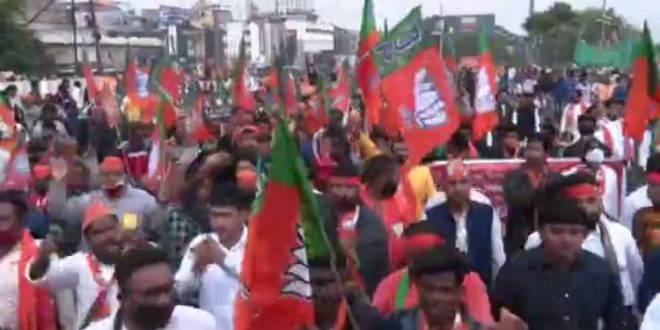Bhubaneswar: In the 2024 Odisha Assembly elections, the Bharatiya Janata Party (BJP) achieved a significant victory, ending the 24-year reign of the Biju Janata Dal (BJD).
The 2024 Odisha Assembly elections marked a significant political upheaval in the state. The BJP’s rise to power ended the BJD’s long-standing dominance, reflecting a desire for change among the electorate. While the BJD managed to hold on to some strongholds, the overall sentiment favored the BJP. The Congress, although still in third place, showed signs of revival with an increase in seats.
This dramatic shift saw significant losses and gains among the political heavyweights of the state.
Key BJD leaders, including Susanta Singh, Sanjay Das Burma, and Debi Prasad Mishra, faced defeats due to anti-incumbency sentiments. Despite BJD supremo Naveen Patnaik retaining his Hinjili seat, he lost to BJP’s Laxman Bag in the Assembly. Congress secured 14 seats, improving from 9 in 2019.
Notable winners and losers from both BJD and BJP were listed in the detailed election results.
Major losers and winners
BJD losers:
Prominent BJD leaders such as Susanta Singh, Sanjay Das Burma, and Debi Prasad Mishra, Ashok Panda were among those who lost their seats.
BJP losers:
Despite their overall victory, some key BJP figures like Dilip Ray and Dr. Purna Chandra Mahapatra failed to secure seats. This highlights that while the party succeeded overall, individual constituencies presented challenges.
BJD winners:
Notable BJD victors included Naveen Patnaik, who retained his seat in Hinjili, and Ranendra Pratap Swain from Athagarh.
BJP winners:
The BJP saw success with candidates like Upasana Mohapatra in Brahmagiri and Suresh Pujari in Brajarajnagar.
The role of the Congress party
The Congress Party maintained its position as the third-largest party in the Assembly, increasing its seats from 9 in 2019 to 14.
Analysis of the shift
The BJP’s success can be attributed to several factors:
Anti-Incumbency: A prevailing sense of dissatisfaction with the long-standing BJD governance played a crucial role in the shift. Voters sought change after over two decades under the same leadership.
Strategic Campaigns: The BJP’s focused and strategic campaigns in key constituencies paid off, allowing them to capitalize on the anti-incumbency wave.
Leadership: Strong leadership and clear messaging helped the BJP resonate with a larger voter base.
This election underscores the dynamic nature of Odisha’s political landscape and sets the stage for new governance and policies under the BJP’s leadership. As the state transitions to this new phase, the impact of this political shift will unfold, shaping Odisha’s future trajectory.
 Update Odisha-Latest Odisha News I Breaking News Get latest news on Odisha, Govt. Jobs, OSSC, OPSC, Entertainment, Crime, Sports, and Education
Update Odisha-Latest Odisha News I Breaking News Get latest news on Odisha, Govt. Jobs, OSSC, OPSC, Entertainment, Crime, Sports, and Education



